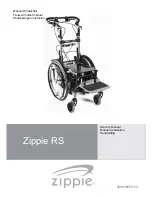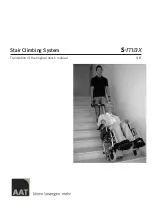
11 WWW.SPEXSEATING.COM
SPEX HEAD SUPPORT USER MANUAL
WARNING
Transit Safety
Correct Positioning of Belt Restraints
When using the Spex Seating System as a vehicle seat, both a pelvic-
belt restraint and shoulder-belt restraint must always be used. To
correctly position the belt restraints on the wheelchair occupant, the
following must be ensured:
• The pelvic-belt restraint should be worn low across the front of
the pelvis near the junctions of the pelvis and thighs.
• The angle of the pelvic-belt restraint should be between 30° to
75° relative to the horizontal and, ideally, between 45° to 75° to
the horizontal (as shown in Figure 2).
• The belt-restraint buckle of three-point belt restraints should
be placed in contact with the occupant’s body and away from
wheelchair components.
• The junction of the shoulder-belt and pelvic-belt of three-point-
belt restraints should be located near the hip opposite the
shoulder over which the diagonal belt crosses and not near the
midline of the occupant.
• Belt restraints should not be routed outside of the wheelchair
wheels or over the wheelchair armrests, and should not be held
away from the body by wheelchair components or parts.
• Upper torso belt restraints should fit directly over, and in contact
with, the middle of the shoulder.
• Belt restraints should be adjusted to fit as snugly as possible,
consistent with user comfort.
• Belt restraints should not be worn twisted in a manner
that reduces the area of contact of the belt webbing with
the occupant.
Figure 1
Figure 2
Pelvic-belt restraints should
make good contact with the
front and the side of the
body near the junctions
of the thighs and
pelvis and
against the
hips.
Belt restraints must not be
held away from the body by
wheelchair components such
as armrests or
wheels
Figure 3a - Improper positioning of pelvic-belt
restraints over wheelchair supports.
Figure 3b - Proper routing and positioning of belt
restraints on the wheelchair occupant.


































